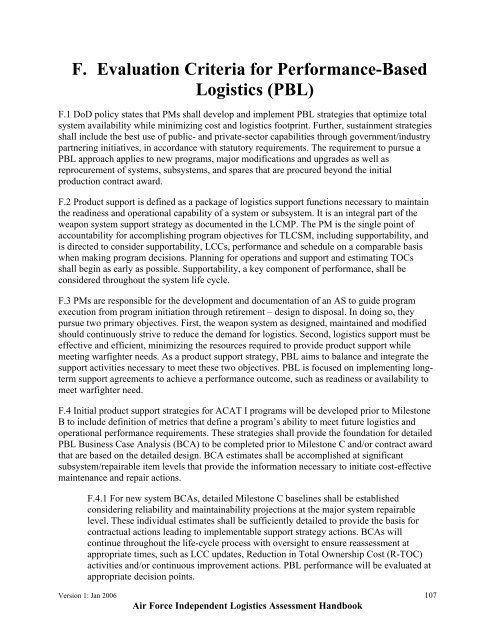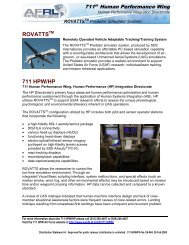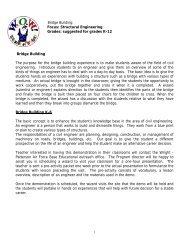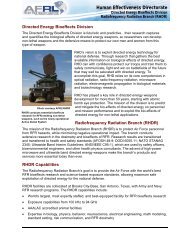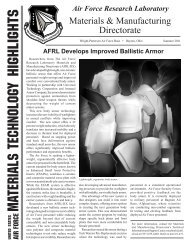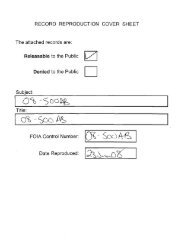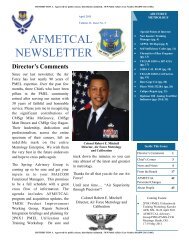USAF ILA Handbook - ACC Practice Center - Defense Acquisition ...
USAF ILA Handbook - ACC Practice Center - Defense Acquisition ...
USAF ILA Handbook - ACC Practice Center - Defense Acquisition ...
You also want an ePaper? Increase the reach of your titles
YUMPU automatically turns print PDFs into web optimized ePapers that Google loves.
F. Evaluation Criteria for Performance-Based<br />
Logistics (PBL)<br />
F.1 DoD policy states that PMs shall develop and implement PBL strategies that optimize total<br />
system availability while minimizing cost and logistics footprint. Further, sustainment strategies<br />
shall include the best use of public- and private-sector capabilities through government/industry<br />
partnering initiatives, in accordance with statutory requirements. The requirement to pursue a<br />
PBL approach applies to new programs, major modifications and upgrades as well as<br />
reprocurement of systems, subsystems, and spares that are procured beyond the initial<br />
production contract award.<br />
F.2 Product support is defined as a package of logistics support functions necessary to maintain<br />
the readiness and operational capability of a system or subsystem. It is an integral part of the<br />
weapon system support strategy as documented in the LCMP. The PM is the single point of<br />
accountability for accomplishing program objectives for TLCSM, including supportability, and<br />
is directed to consider supportability, LCCs, performance and schedule on a comparable basis<br />
when making program decisions. Planning for operations and support and estimating TOCs<br />
shall begin as early as possible. Supportability, a key component of performance, shall be<br />
considered throughout the system life cycle.<br />
F.3 PMs are responsible for the development and documentation of an AS to guide program<br />
execution from program initiation through retirement – design to disposal. In doing so, they<br />
pursue two primary objectives. First, the weapon system as designed, maintained and modified<br />
should continuously strive to reduce the demand for logistics. Second, logistics support must be<br />
effective and efficient, minimizing the resources required to provide product support while<br />
meeting warfighter needs. As a product support strategy, PBL aims to balance and integrate the<br />
support activities necessary to meet these two objectives. PBL is focused on implementing longterm<br />
support agreements to achieve a performance outcome, such as readiness or availability to<br />
meet warfighter need.<br />
F.4 Initial product support strategies for ACAT I programs will be developed prior to Milestone<br />
B to include definition of metrics that define a program’s ability to meet future logistics and<br />
operational performance requirements. These strategies shall provide the foundation for detailed<br />
PBL Business Case Analysis (BCA) to be completed prior to Milestone C and/or contract award<br />
that are based on the detailed design. BCA estimates shall be accomplished at significant<br />
subsystem/repairable item levels that provide the information necessary to initiate cost-effective<br />
maintenance and repair actions.<br />
F.4.1 For new system BCAs, detailed Milestone C baselines shall be established<br />
considering reliability and maintainability projections at the major system repairable<br />
level. These individual estimates shall be sufficiently detailed to provide the basis for<br />
contractual actions leading to implementable support strategy actions. BCAs will<br />
continue throughout the life-cycle process with oversight to ensure reassessment at<br />
appropriate times, such as LCC updates, Reduction in Total Ownership Cost (R-TOC)<br />
activities and/or continuous improvement actions. PBL performance will be evaluated at<br />
appropriate decision points.<br />
Version 1: Jan 2006 107<br />
Air Force Independent Logistics Assessment <strong>Handbook</strong>


